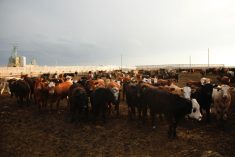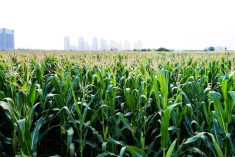Chicago | Reuters — Ranchers placed 1.93 million cattle in U.S. feedlots in August, the U.S. Department of Agriculture said on Friday, in a stronger-than-expected report likely to weigh on futures early next week.
Cattle placements rose about three per cent from August in 2016, USDA said. Analysts polled by Reuters had predicted a decline of nearly three per cent.
The placements were the largest for August since 2012 and the largest overall since May of this year, when 2.119 million cattle moved into feedlots, according to USDA data.
Read Also

USDA cuts US corn stocks outlook after raising exports to record high
The U.S. Department of Agriculture lowered its U.S. corn supply forecast in a monthly supply-and-demand report on Friday and raised its outlook for U.S. exports of the grain this season to a record high following a strong pace of overseas shipments.
“It means there’s more beef ahead of us,” said Linn Group analyst John Ginzel, who had predicted a placement spike of 104.3 per cent when most other analysts anticipated a decline.
Cattle placed on feed in August should reach slaughter weight in the first quarter of 2017.
“It’s a negative report… and most negative for the February and April time slots,” said U.S. Commodities analyst Don Roose.
Roose predicted Chicago Mercantile Exchange cattle futures would open 0.5 cent to one cent lower on Monday. CME October live cattle on Friday reached a roughly 1-1/2 month high, settling up 1.475 cents at 111.575 cents/lb., rising in part on expectations that the USDA data would be bullish.
USDA said a total of 10.5 million cattle were on feed as of Sept. 1, up four per cent from a year ago. That also was more than pre-report estimates for 10.409 million cattle, or 102.7 per cent of last year. Marketings of cattle in August totaled 1.98 million head, up six per cent from a year ago but near forecasts for an increase of 5.8 per cent.
In a separate monthly cold storage report, USDA said 476.26 million lbs. of beef were in storage as of Aug. 31. That is up from 431.84 million lbs. at the end of July and estimates from a few analysts for 426.5 million lbs.
— Michael Hirtzer reports on commodity markets for Reuters in Chicago.




















